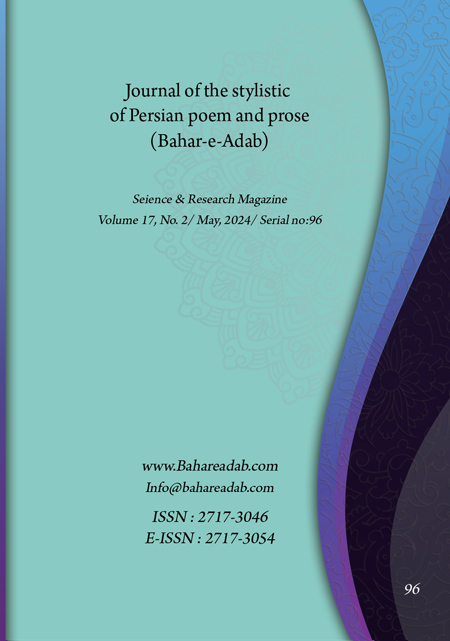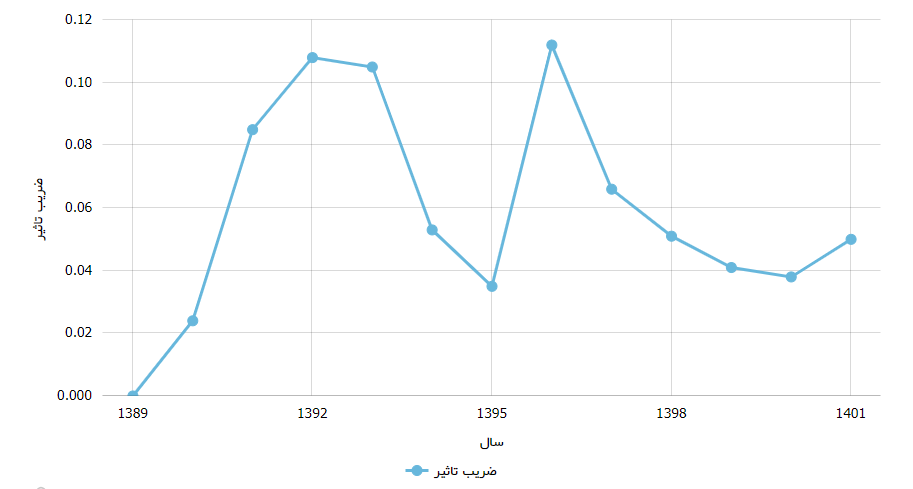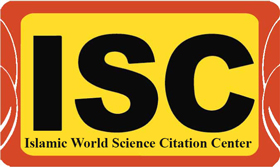Journal ID
Contact Us
address: Tehran Post Box 1558-14665Email: info@bahareadab.com
About the Journal
The Journal of the Stylistic of Persian Poem and Prose (former Bahar-e-Adab) is an open-access monthly publication focusing on the specialized field of Persian prose and verse stylistics. Founded by Dr. Omid Majd, this private monthly magazine published its first issue in the autumn of 2008 and, with the valuable scientific credentials of esteemed members of the editorial board, as well as the rich and valuable articles submitted by distinguished researchers, it achieved a valuable scientific-research rating in the summer of 2009 after a year and a half. This journal follows the Committee on Publication Ethics (COPE) and complies with the highest ethical standards by ethical laws. read more about this publicationJournal Metrics
| Publication start year | 2008 |
| ISC Quartile | Q2 |
| ISC | 0.152 |
| Issue per year | 12 |
| Published articles in year | 180 |
| Acceptance rate (%) | 18.6 |
| Research papers | 1,781 |
| Article view | 3,305,920 |
| PDF download | 1,484,221 |
| No. of pages | 37,401 |
| No. of references | 28,496 |
-
1 . A Study of the Stylistic Features of Saghar Kangavari’s Divan
-
Abdolreza Naderifar (Author in Charge), Zeinab Heydarifard
- Page 1-22
-
-
2 . Stylistic research in Gonabadi Heravi's divan
-
Ahmad Alizadeh (Author in Charge)
- Page 23-43
-
-
3 . A study of the stylistics of the poems Ta’sir Tabrizi
-
Gholamali Hazrat Gholizadeh , Ayat Shokati (Author in Charge), Jalil Amirpour Darani
- Page 45-62
-
-
4 . The Ruler and the hero of love in Ada and Shahnameh
-
Shahram Freedom (Author in Charge), Benedict Steppeler
- Page 63-79
-
-
5 . Critique and classification of the views of critics of Shamloo poetry and thought
-
Soheila Gholaminejad , Mohammad Reza Roozbeh (Author in Charge)
- Page 81-103
-
-
6 . Transcendental images and its manifestations in Biddle Dehlavi's lyric poems and Sohrab Sepehri's poems
-
Mohammad Ansari Pouya , Abbas Nikbakht (Author in Charge), Maryam Shabanzadeh
- Page 105-120
-
-
7 . Belief in Scapegoating in Rumi's Masnavi and Attar's Divan
-
Zahra Baratieh , Ghorban Ali Ebrahimi (Author in Charge), Mehrdad Chatraei
- Page 121-137
-
-
8 . Application of Jill Deleuze's minority literature approach to Mahmoud Dolatabadi's novel "Jai Khali Salouch"
-
Maryam Ghorbanali , Ashraf Chegini (Author in Charge), Mohammad Ali Shafaei
- Page 139-156
-
-
9 . Hints and its types in Bidel Dehlavi's lyric poems
-
Mohammad Haji Abdolhosseini , Bahram Parvin Gonabadi (Author in Charge), Sorayya Razeghy
- Page 157-174
-
-
10 . A Stylistic Study of Ahamd Shamlous Poetry
-
Fariba Mirza Mohammadnia , Mohammad Ali Gozashti (Author in Charge), Alieh Yousefam
- Page 175-193
-
-
11 . The evolution of the meaning and function of "Homay" from the mythical period to the contemporary period
-
Asieh Behboodi , Esmaeil Azar (Author in Charge), Hamidreza Ardestani
- Page 195-218
-
-
12 . Innovation and imitation in the eulogistic odes of the Persian Neo-Classicism Literary School
-
Reza Bayat (Author in Charge)
- Page 219-236
-
-
13 . Comparison of the mythical character of Siah Galesh with the mythical character of Gilgamesh
-
Habibollah Gholamdost , Ali Mohammad Moazani (Author in Charge), Jahandost Sabzalipor , Sororollah Nouruzi
- Page 237-215
-
-
14 . Abstract Structural analysis of the image in Khaju Kermani's lyric poems
-
Zohreh Saremi , Mehdi Mohaghghegh (Author in Charge), Mah Nazari
- Page 253-272
-
-
15 . The state of rhetoric and grammer in the Indian subcontinent according to the book Zavabet - Azimiyeh
-
Tayyebeh Mirzaghai , Abdolreza Madareszadeh (Author in Charge), Fereshteh Jafari
- Page 273-284
-
Search in Articles
Indexing and Abstracting





